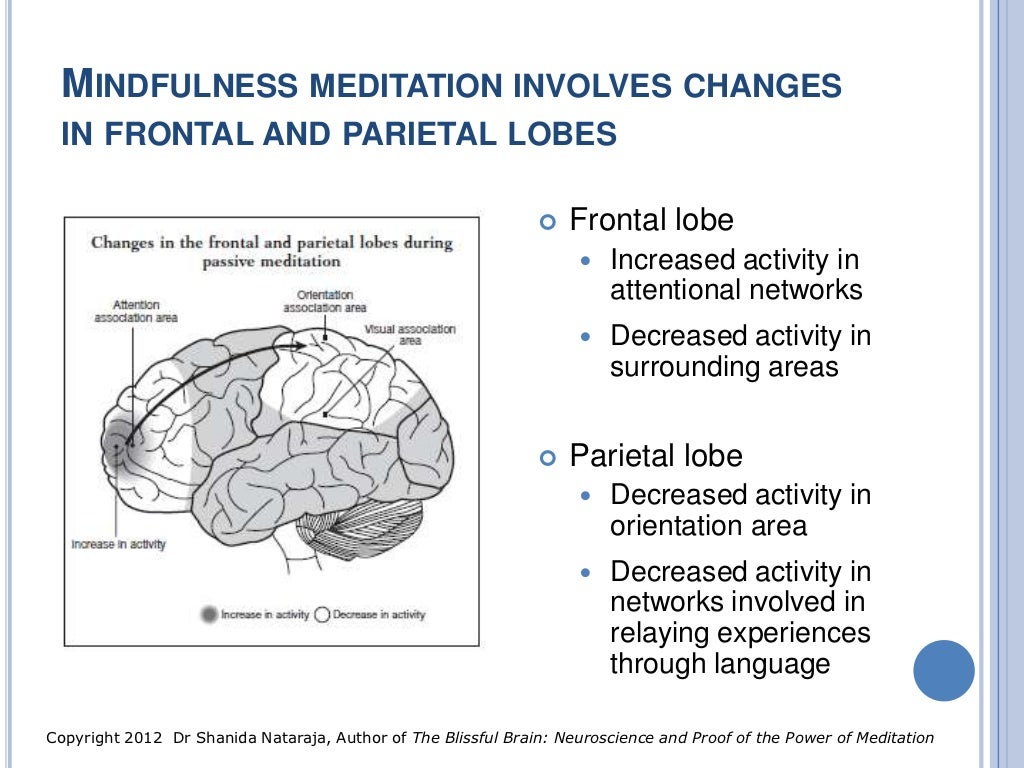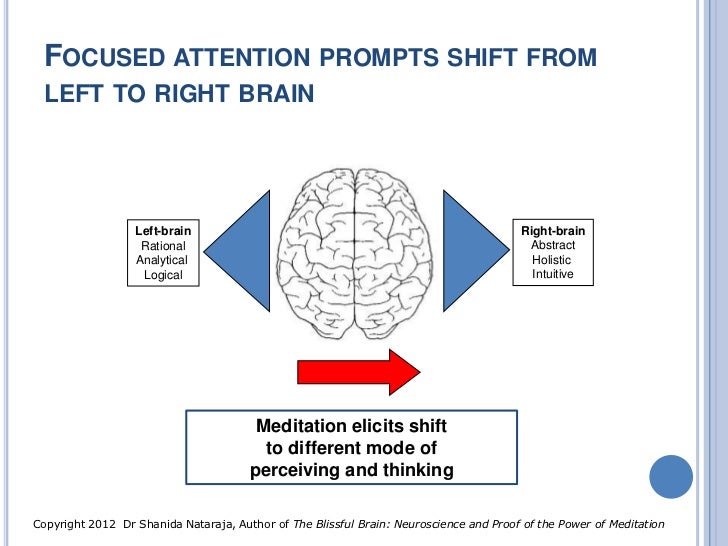I had posted my argument for this claim - but it was mainly from cross-correlation of various meditation traditions - Daoist and Vedic, etc.
So the new Oxford Handbook on Spontaneous Thought has a chapter on focused awareness meditation.
This would be what we call "concentration" meditation but it leads into visualization meditation.
In other words focus meditation is to empty out the conceptual mind.
Science Director, Mind & Life Institute - Mind & Life Institute
That's the author - Wendy Hasenkamp. Her website.
I was given some nice complements from the qigong masters about this ability - that I had the "best concentration of any student" the qigong master had met - but "don't let it go to your head!"
that is quite literally. The key secret of alchemy is visualization of the fire under the water. So focused awareness is the key first step - what Gurdjieff called the "shock" of self-awareness. Interparietal Sulcus - back of the brain increase in gray matter volume after long term meditation
The intraparietal sulcus is an area of the brain behind the motor cortex, and in front of the visual cortex, it is responsible for visual-motor integration.
So with our eyes open we are constantly under the barrage of subconscious holographic emotional interactions - that in reality exist in the 5th Dimension as noncommutative phase. Our brain interprets this waking state as a real 4D linear time reality - but in fact we are now dreaming.
And so depending on our waking state dreaming, then our dreams become increasingly synchronized and more energetic such that even dreams can be precognitive! So for example when we start having flying dreams this means that the liver energy is building up - the yin qi of the liver. But this also is still considered a blockage.
We need to go into the heart energy for the truth "yuan qi" energy to manifest and this occurs only after the lower tan tien is filled up with the yin qi energy - and so the original qigong master gave me this compliment:
Your mind is very powerful from years of meditation: Just focus on the lower tan t'ien.
So as I note in the "free pdf" - most people have the frequency of their spirit - their shen or heart-mind - still at the lower chakras - in the perineum or reproductive organs or maybe the liver at best.
But when the third eye is opened up this is done through the heart so that the central channel connects the perineum to the pineal gland via the heart.
So if we can keep the focus on our awareness - the back of the brain - just as I end the free pdf - this is the best way for the mind to naturally sublimate the perineum life force energy and also to keep the qi from leaking out of the eyes with the shen awareness.
So all this meditation research on the mind is still very limited. For example the original qigong master says when he goes into the Emptiness he sees light in his lower tan t'ien - and so that gives a new meaning to opening the third eye - in fact it is the whole central channel that needs to fill with light-awareness. The gut small intestine is the 2nd largest location of neurons and third is the heart, after the brain. And so this quote from the qigong master who befriended me:
The key is being open to listening, that's the hardest thing. If you get five seconds of focus you're doing something. You slow yourself down, to maintain your focus, breathing is an important part, if you can pull the visualization without losing the connection, then it's much easier to shift the energy. If I inhale and exhale and be more objective, not so subjectively pulled into the experience, it would be like taking a snap-shot, looking at the snap-shot, keeping it steady while I was breathing. I could then keep my focus on something for an extended period of time. All I had to do was wait and the energy would shift on its own.He uses the term focus and then visualization and now from the above brain studies - we have corroboration of the connection. So here Dr. Hasenkamp demonstrates this connection between focused attention and visualization
By pairing sets of stimuli (e.g., positive or negative words paired with faces of people from different racial or social groups) and measuring reaction time, researchers are able to evaluate social biases that may be operating below the level of conscious awareness.Another study shows:
On the other hand, both FAM [Focused Awareness] and LKM [LovingKindness] practice appeared to affect the neural responses to affective pictures.And so can anyone find the error I made in my new article published?
Bistable Perception - the ability to hold a visual logical contradiction at steady attention - is through the back of the brain - interparietal sulcus!
This is considered indicative of quantum noncommutative phase in action in the brain - as Harold Atmanspacher as argued. He has shown that people who meditation can hold this bistable perception longer - and now we have the evidence that long term meditation increases interparietal sulcus activation.....
So the spinning naked lady has now been solved! Just change your focus and she changes direction - thanks to the color coding of perspective. What's hilarious is to shift your eyes back and forth and she just hovers - actually you can hold the BiStable Perception of both directions at the same time! Cool.
Most people will see her turning counter-clockwise, which apparently means you're more left brained (logical).
Visual-spacial skills do localize to the right parietal lobe in most people, but some people are the opposite. But having good visual-spacial skills does not mean that one’s entire right hemisphere is dominant or functions better. Each ability, whether it localizes to the right or left hemisphere, can vary independently. The direction correlation to brain side dominance is debunked.
A lot has to do with the position of the outward leg when you begin watching the illusion. For most people, if the leg is pointing backward on the right, you are more inclined to see the counter rotation. If the leg is pointing back on the left, you are more inclined to see the clockwise rotation. If the leg is pointing forward, the directions are reversed.
If you blink, notice where the leg is pointing and see which way you observe the rotation. Then you can time your blinks to change the rotation.







No comments:
Post a Comment